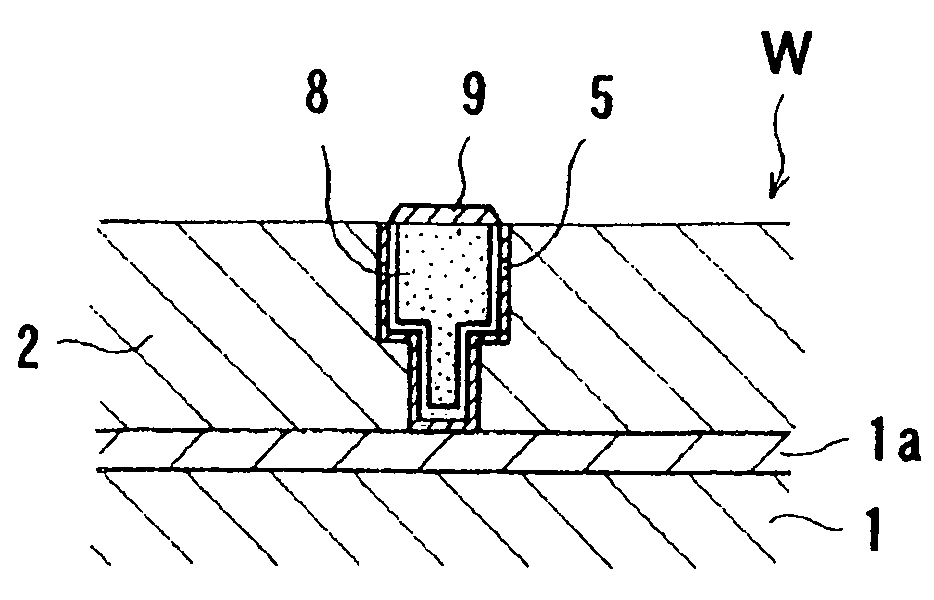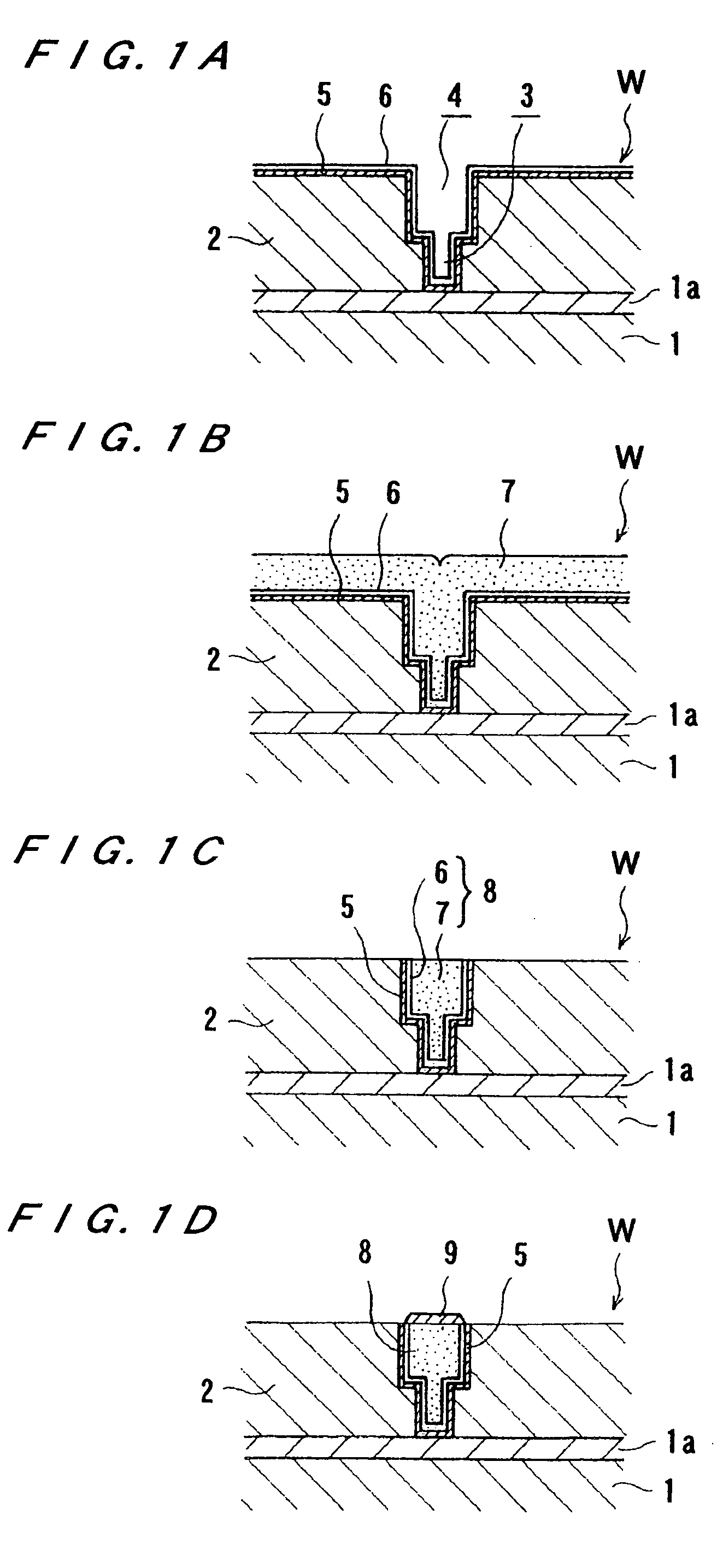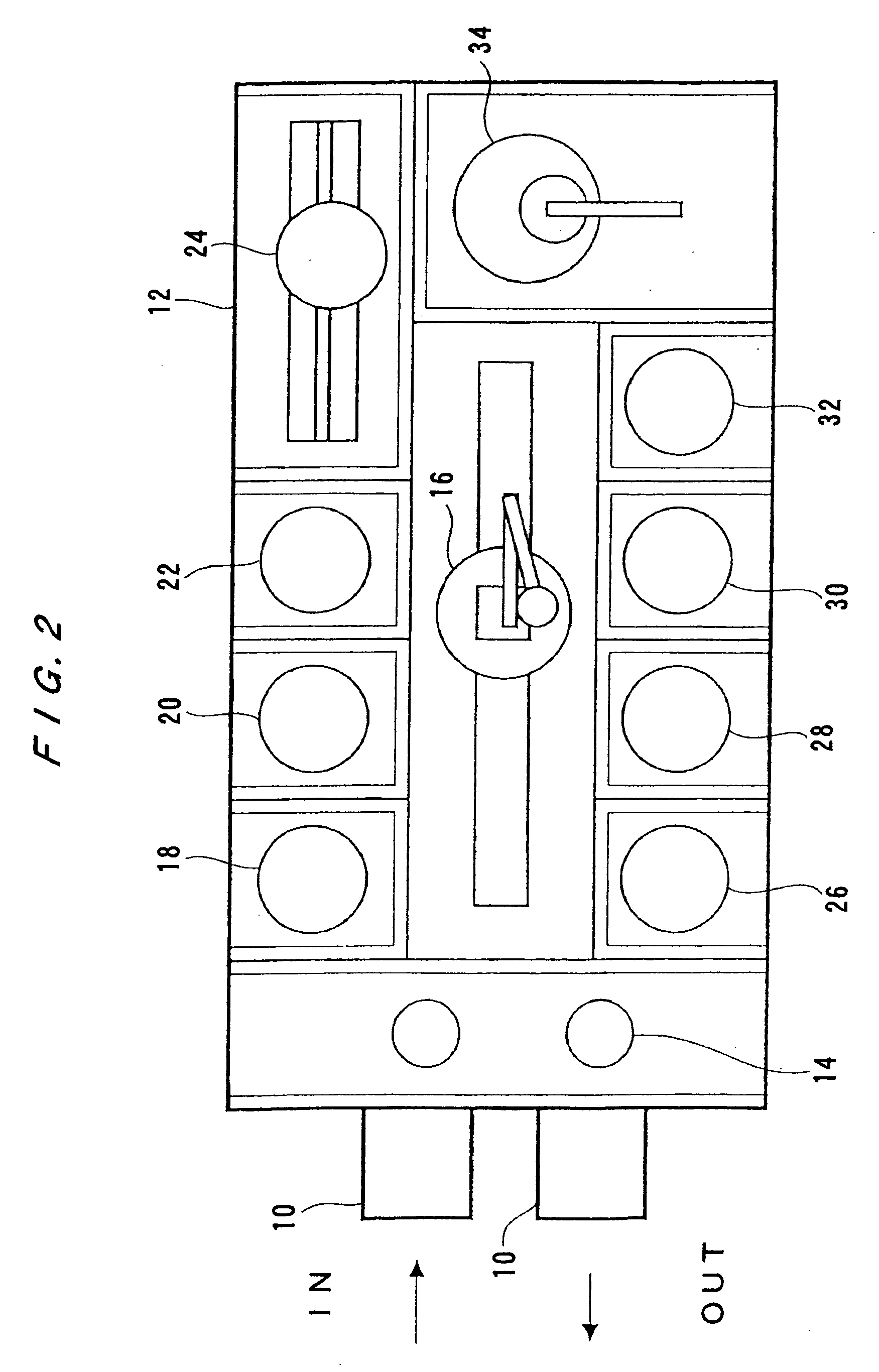Method of and apparatus for manufacturing semiconductor device
a semiconductor device and manufacturing method technology, applied in the direction of semiconductor/solid-state device manufacturing, electric devices, basic electric elements, etc., can solve the problems of not being able to avoid the damaged layers that remain, affecting the reliability of semiconductor devices that are produced, and remaining damaged layers that have been chemically damaged
- Summary
- Abstract
- Description
- Claims
- Application Information
AI Technical Summary
Benefits of technology
Problems solved by technology
Method used
Image
Examples
Embodiment Construction
[0104] Preferred embodiments of the present invention will be described in detail below. In the embodiments described below, the present invention is applied to a semiconductor device manufacturing apparatus which embeds copper as an interconnect material in fine interconnect recesses defined in a surface of a substrate, such as a semiconductor wafer or the like, to form interconnects composed of a copper film. However, the present invention is also applicable to semiconductor device manufacturing apparatus which employs interconnect materials other than copper.
[0105]FIG. 2 shows in plan a semiconductor device manufacturing apparatus according to an embodiment of the present invention. As shown in FIG. 2, the semiconductor device manufacturing apparatus has a rectangular housing 12 to which transport boxes 10 such as a SMIF box for housing a number of substrates such as semiconductor wafers therein are detachably mounted. The housing 12 houses therein a loading / unloading station 14...
PUM
 Login to View More
Login to View More Abstract
Description
Claims
Application Information
 Login to View More
Login to View More - R&D
- Intellectual Property
- Life Sciences
- Materials
- Tech Scout
- Unparalleled Data Quality
- Higher Quality Content
- 60% Fewer Hallucinations
Browse by: Latest US Patents, China's latest patents, Technical Efficacy Thesaurus, Application Domain, Technology Topic, Popular Technical Reports.
© 2025 PatSnap. All rights reserved.Legal|Privacy policy|Modern Slavery Act Transparency Statement|Sitemap|About US| Contact US: help@patsnap.com



